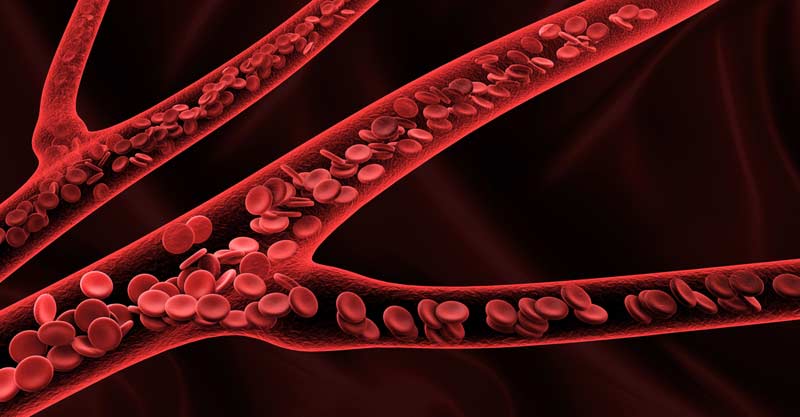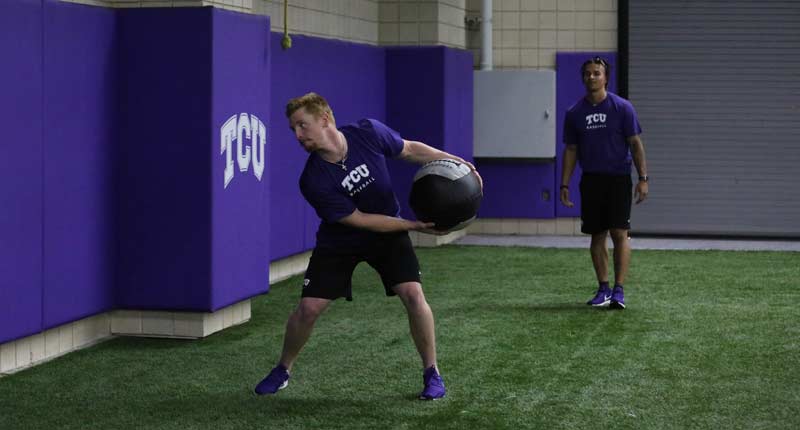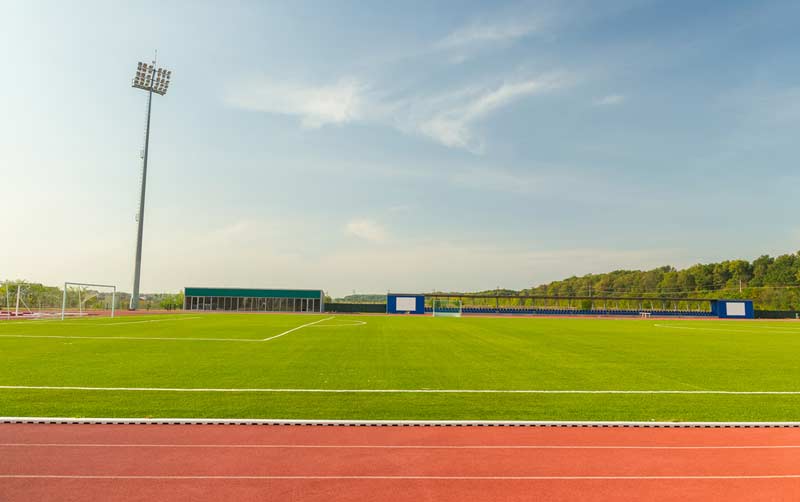[mashshare]
Conditioning for baseball pitchers has long consisted of work that is non-specific to the demands of the game. Often, what you find on baseball fields all over America is a combination of long, slow, distance work or high-intensity interval-type sprints with incomplete recoveries. Not only are these not specific to the energy system needed for the sport, but they compete with adaptive reserves that could be more useful in other processes.
In truth, any talk of energy system development with baseball athletes should start and stop with the alactic system. The question becomes whether there is a purpose for developing the oxidative or anaerobic-glycolytic systems in baseball. The oxidative and anaerobic-glycolytic energy systems may have their place in other sports, but I tend to disagree that they are useful for baseball athletes.
The oxidative and anaerobic-glycolytic energy systems may have their place in other sports, but I tend to disagree that they are useful for baseball athletes, says @ZachDechant. Share on XAll too often, coaches judge the training for a sport by “how much?” and “how hard?” If it doesn’t max out those two qualities, then training was a waste of time. Possibly the most misunderstood concept in training athletes is that of developing energy systems or “conditioning.”
Energy systems do not work independently, despite what virtually every student in an exercise science class is taught. All three energy systems are always active in every aspect of performance. One doesn’t kick in at a certain time and shut off at another time in succession. Each system’s contribution varies according to the intensity and the duration of the activity being performed. So, if all systems are active at any one point, why wouldn’t it be beneficial to train all three systems?
One reason is adaptive reserves. It makes little sense to spend a large amount of time on training something that contributes very little, if at all. Athletes only have so much energy to adapt to training stimuli. When more and more gets added to their plate, they lose the ability to adapt to a specific stimulus, and this, for a pitcher, should be alactic power. Over the course of long seasons, high volumes of non-specific work will take their toll on the body.
Physical and Mental Demands of Pitching
With that in mind, let’s look at the average action of a baseball pitch. A pitcher’s total motion is usually in the range of about 1.0-1.5 seconds in duration, from initial movement to ball release. The ball is thrown back and the next pitch is started on average around the 12- to 15-second mark. This is a 1:10+ work-to-rest ratio if we’re being conservative, but it could easily be higher. If we look at the standards for work-to-rest ratios according to the NSCA guidelines, this places pitching in the alactic zone.
Pitching isn’t always an all-out maximal effort throughout the motion, either. If we compare throwing a pitch to another 1- or 1.5-second event, for most athletes this would be a 7- to 10-meter sprint. The sprint, however, is an all-out maximal effort event. Pitching—and this is very dependent upon the individual—is often a controlled buildup of momentum and energy into a maximal effort at release.
Coaches have traditionally adored running pitchers to no end in season. After all, they need their legs under them to be able to pitch, right?! Baseball has long been a slave to the belief that pitching is built around a foundation of running to condition the body. General running is not specific, nor is it complementary to speed or the power development needed by pitchers. Too much long, slow, distance work or too many lactate-producing interval runs can compromise gains on the other end of the spectrum.
What about high heart rates in games…
What about the case of the heart rate? Heart rates do often climb, with starting pitchers in the 140-170 bpm range. However, studies have shown that elevated, in-game heart rates are more associated with perceived stress and anxiety when on the mound than to physical activity. In fact, one study on heart rates during pitching showed the highest heart rates were during home games in the first two innings, followed by a gradual decrease each inning thereafter. Compared to road games, there was a significant difference. Again, this shows how much emotional excitement in front of the home crowd affects heart rates.
Well, we run them to clear lactate from previous starts…
Yes, the old theory of running endlessly to clear lactic acid out of the arm is still around. A pitcher’s effort generally lasts less than 1.5 seconds, with long rest as detailed above. This does not even come close to a buildup of lactate. Soreness in the throwing arm following an outing does not come from lactic acid buildup. Lactate is actually a good thing when it comes to energy system development, but that’s for another time.
Pitcher soreness comes from the massive stretch shortening cycle, as well as eccentric forces placed upon the arm and body, not lactic acid buildup, says @ZachDechant. Share on XPitchers become sore from the massive stretch shortening cycle, as well as eccentric forces placed upon the arm and body from rapid acceleration and deceleration. Huge distraction forces up to 1x bodyweight are placed upon the shoulder during every throw.
What is the role, if any, that each energy system can play in the grand scheme of the pitcher?
Benefits of the Aerobic System for Power Athletes
The aerobic energy system is built for the long haul for low-intensity bouts. It was previously thought that the aerobic system kicked in around 90 seconds to two minutes into exercise, but it is now known that the aerobic system is present from the get-go and much more important than originally thought. The benefits of a properly functioning aerobic system often go beyond long-distance running sports. There are several advantages to developing the oxidative system.
Vagal Tone and the Parasympathetic Nervous System
One of the biggest benefits of aerobic training pertains to autonomic nervous system regulation. The autonomic nervous system (ANS) makes up one part of the body’s nervous system. The ANS is broken into two parts: the sympathetic and parasympathetic nervous systems.
The sympathetic nervous system (SNS) is known as “fight or flight.” This system is related to stress. The SNS runs overtime when stress is present, whether in the form of competitions, strenuous training, money problems, relationship issues, etc. For the most part, the SNS is overly active in most Americans due, more than anything, to our thoughts. But you can see that high-intensity training and competitions also fall under the umbrella of the SNS, which relates back to athletes. The SNS runs overtime for baseball athletes who play multiple competitions per week.
On the flip side, we have the parasympathetic nervous system (PNS). The PNS is known as “rest and digest.” The PNS is where we want athletes to be when not training or competing. It stimulates recovery in the body and athletes make gains when recovering, not when training. Low-intensity aerobic methods stimulate the PNS. A foundation of aerobic development helps the body recover from sympathetic stressors. It helps to lower everyday energy usage and prepare for future stressors.
A 2012 study by James, et al. demonstrated that subjects participating in severe exercise bouts experienced an increased sympathetic influence on the heart and a decreased parasympathetic tone. It was shown that intense repeated training stressed the subject’s ability to engage the parasympathetic nervous system and maintain homeostasis.
ATP Replenishment
Another huge benefit of the aerobic system is its ability to regenerate ATP and the removal of waste products during bouts of alactic work. The aerobic system is hard at work during short, high-intensity bouts of alactic training. Rest periods rely on the aerobic process to replace substrates essential to the replenishment of ATP. A large foundation of aerobic development can mean a more powerful alactic system, especially when it comes to alactic capacity, or the ability to reproduce high-powered outputs for a long duration. This doesn’t necessarily affect the game of baseball, but a very small case could be made for pitchers.
While the aerobic system can play a vital role in energy-system-dominant sports, it’s still not a main player in the sport of baseball, says @ZachDechant. Share on XWhile the aerobic system can play a vital role in energy-system-dominant sports, it’s still not a main player in the sport of baseball. Athletes can achieve the necessary aerobic adaptations with work that doesn’t stray far from the ultimate goal of speed and power development.
Guidelines for Movement Circuits and Dynamic Warm-Ups
Two great methods for creating an underlying foundation of aerobic capacity are movement circuits and extended dynamic warm-ups. These are excellent for pitchers on the day following a start or high-intensity mound effort. Keeping the heart rate elevated in the range of 120-150 bpm for 20-30 minutes can create a low-intensity aerobic capacity adaptation.

A quality movement series the following day restores ranges of motion throughout fascial and muscular systems. It pushes lymph throughout the body, which aids in the elimination of waste products and supplies the tissues with oxygenated blood.
It’s no surprise that a one-sided asymmetrical activity would cause motion adaptations, so using movement circuits the following day helps to kill two birds with one stone. Not only do we stimulate recovery processes in the body, but we can do so while training and developing the oxidative system to a small degree and assisting the body’s ability to easily return to a parasympathetic state.
A properly put together, daily, dynamic warm-up can stimulate a foundation for aerobic adaptations.
Parameters:
1. Heart rates maintained at 120-150 bpm even during rest periods.
2. Lower reps – generally between 5 and 10, at most.
- a. Usually no more than 5 each side.
If reps are too high, heart rates will climb, and lactate accumulation can begin to outpace elimination. We don’t want that happening at this time.
3. Rest periods
- a. HR stays above 120 bpm.
4. Movements
- a. Total body compound movements.
b. We often superset a lower movement, upper movement, core, and mobility movement for multiple sets. You may ask how we do a large compound movement but then suggest a lower, upper, and so on. An upper body movement may be a push-up with rotation or push-up into a DB Row. These use the entire anterior and lateral chain, in many cases. Five reps per side and most athletes’ heart rates will climb. Use a short rest that allows it to drop back to the 120-bpm mark before the next movement begins.
Tempo Runs and Pitchers
Tempo runs are low-intensity sprints performed at 65-75% of max speed. They are essentially between full-out sprints and jogging. They were termed “tempo runs” by the great Canadian sprint coach Charlie Francis. He utilized tempo runs as not only a form of aerobic development for sprinters, but a means of recovery in his high/low system of programming.
Tempo runs are an excellent means of recovery work on low-intensity days. Staying in the 65-75% range for max speed is essential for nervous system recovery. Francis’ beliefs focused on eliminating the middle ground of sprinting at 76-95% intensities. These intensities are too slow to be utilized for speed development, and too fast for recovery. They become too intensive to recover from quickly and create residual fatigue for the next high-intensity day. When that happens, the main work can suffer. Tempo runs give athletes a more specific training effect without substantial nervous system fatigue.
- Aerobic Development
- Capillary Density
- 40-70%
- Maximal acceleration
- 1-3 reps
- High number of sets
- 70+%
- 1-5 reps
- Low to moderate number of sets
- 1 min. per 10 yds
- Rotational
- Linear forward/backward
- Specific
- Double leg
- Single leg
- Alternating
Tempo runs give athletes the benefits of cardiovascular development in a fashion more complementary to the rest of their training. They are essentially short sprints followed by rest intervals long enough to keep lactate at bay.
A huge benefit that Charlie Francis touted with tempo runs was increased capillary density. Low-intensity tempo runs build a larger capillary network throughout the muscle. Increasing capillary density provides several benefits to baseball athletes.
- a. Staying Warmer
- Increasing capillary density creates more heat throughout the muscle and allows for the muscle to stay warmer longer. This is hugely important for Olympic-level sprinters, as their training runs often require 10-20 minutes of rest to ensure full recovery. The ability to stay warm is key. With baseball, this is an absolute no-brainer. Pitchers are always active while on the mound, but they have long periods of sitting and waiting to go out for the next inning.
- b. Blood Flow and Nutrient Transfer
- Enhanced capillary density improves blood flow throughout the muscle complex. Increasing blood flow not only enhances heat, but also improves oxygenation and nutrient transfer. Nutrient transfer is important not just for the benefits of more nutrient availability on the good side, but also the removal of waste products on the bad side.
Tempo Parameters
Rest Intervals
I prefer a walking rest interval based upon distance during tempo runs. This is generally a 1:2 ratio in terms of yardage. Take the distance of each rep and walk half that between each run. If athletes do 100-yard tempo runs, I have them walk to the 25-yard line and back for their rest interval, for a total of 50 yards.
Intensity
The intensity is the most important element of tempo runs. Athletes should stay within the zone of 65-75% of maximum speed. Calculations can be made based upon an athlete’s best 60-meter time or other sprint time, but I find it unnecessary to do a bunch of calculations. I rely on the athletes to determine their own 65-75%. The best indicator of proper intensity is an athlete being able to perform the first rep and the last rep at the same intensity. An athlete running too fast will begin to fatigue, and the last reps will be slower and more tiring than the first. Tempo runs should be almost refreshing to the body. Fatigue should not be a large factor.
Total Volume
The total volume depends on goals, but I often stay between 1,000 and 1,600 total yards of volume. At times, we may work up close to 2,000 yards, but those times are few and far between. Charlie Francis used 2,000+ yards as his standard for 100-meter sprinters. Coaches should build volume gradually, just as they would with any other new stimulus.
Distance
Each run varies from 50 to 100 yards, but a variety of distances can be effective.
Location
In general, tempo runs should be performed on a softer surface. Grass makes for the best surface to eliminate any repetitive pounding that many baseball athletes may not be used to.
Alactic Methods and Training Concepts
The anaerobic-alactic system is our bread and butter when it comes to baseball development. The alactic system is also known as the Phosphagen, or ATP-PC system. This system relies on few processes to rapidly produce energy for explosive efforts, but it comes at the cost of being very short in duration. For baseball athletes, that cost rarely comes into play, as the alactic system usually reaches its limits after 10+ seconds.
The ultimate goal for baseball is producing higher alactic outputs, says @ZachDechant. Share on XAlactic means and methods consist of short-duration movements dealing with strength training, jumps, medball throws, sled pushes, sprints, etc. The duration, intensity, and rest intervals of each determine whether it is truly alactic or not. Training for strength, speed, and power is generally considered alactic. The ultimate goal for baseball is producing higher alactic outputs.
1. Strength Training
- a. Dynamic effort
b. Rep and max effort
2. Speed Training
- a. 5-50 yards
b. Acceleration and maximal speed runs
c. Full recoveries
3. Medball Throws
- a. Maximal intent throws
b. 3-5 reps per side
c. Full rests intervals
d. Movement patterns
4. Jump Training
- a. 1-5 reps
b. Maximal intent
c. Full rest intervals
d. Variety of movements available

Anaerobic Lactic System
The anaerobic lactic system is the second part of the anaerobic system. It is also known as the lactic or glycolytic energy system. This system is responsible for energy production following the slowdown of the alactic system at around 12 seconds. It produces ATP faster than the aerobic system, but again, comes at the cost of its duration and by-products.
I’ve seen graphs that state baseball is 80% alactic, 15% anaerobic-glycolytic, and 5% oxidative. This is ridiculous. The lactic system has nowhere near a 15% contribution for baseball athletes.
The lactic system rarely, if ever, gets used on the baseball field, says @ZachDechant. Share on XThe lactic system rarely, if ever, gets used on a baseball field. Plays on a baseball field rarely exceed 10 seconds and when they do, athletes get more than enough rest to return to the alactic system. Yes, there are exceptions to every case, but it is rare (if ever) that the lactic system would play a role in a baseball athlete’s training.
I often think of the lactic system as the middle ground that so many “conditioning drills” get built around. The middle ground refers to intensity and rest intervals. Intensities are in the 75-95% range with rests that don’t fully restore an athlete. Intensities over 75% stimulate the nervous system and therefore cannot be classified as recovery or restoration, yet aren’t fast enough to stimulate alactic power or true speed training.
The 300-yard shuttle is a staple for professional baseball organizations in spring training. Rest intervals are incomplete and do not allow for full short-term restoration. They are often classified as a 1:3 work-to-rest ratio, which, as we know from above, is nowhere close to the game of baseball. A 60-second, 300-yard shuttle is commonly given three-minute rest intervals before repeating. And these become tough runs made with large buildups of lactate.
The lactic system makes up much more than its fair share of “baseball conditioning.” If you’re running sprints or drills that last over 10 seconds with incomplete recoveries, then you’re training the lactic system. Not only is this training not specific to the demands of the sport, but it can actually hamper the development of the aerobic system and the ability of the body to recover.

All this means no bow-and-arrow sprints, no ladder poles, no 300-yard shuttles. Those may have their purpose at one time or another, but continually conditioning baseball athletes with this type of running has no purpose.
Parting Thoughts
Conditioning a pitcher to throw 90+ pitches is not all that energy-system-dependent, as many believe. The real conditioning is skill-specific. The ability to throw 90 pitches in a game doesn’t come from road work and miles on the legs. It comes from building throwing workloads gradually and the ability of the body to handle those workloads. We can take anybody who is in shape and it won’t mean they can throw 90 pitches in a game.
On the flip side, you see many out-of-shape guys who can still dominate on the mound. Conditioning is general and doesn’t aid that aspect. Any talk of baseball and energy systems should basically start and stop with alactic development. Are there benefits that can be derived from the other energy systems? Yes, but in the grand scheme of things, the benefits derived from other energy systems are small and often secondary training effects.
Since you’re here…
…we have a small favor to ask. More people are reading SimpliFaster than ever, and each week we bring you compelling content from coaches, sport scientists, and physiotherapists who are devoted to building better athletes. Please take a moment to share the articles on social media, engage the authors with questions and comments below, and link to articles when appropriate if you have a blog or participate on forums of related topics. — SF
[mashshare]
References
Cornell, David J., et al. “In-Game Heart Rate Responses Among Professional Baseball Starting Pitchers.” Journal of Strength and Conditioning Research. 2017; 31(1): 24-29. doi:10.1519/jsc.0000000000001465.
Haff, Greg, and N. Travis Triplett. “Essentials of Strength Training and Conditioning.” Human Kinetics, 2016.
James, D.V., Munson, S.C., Maldonado-Martin, S. and De Ste Croix, M.B. “Heart rate variability: effect of exercise intensity on postexercise response.” Research Quarterly for Exercise and Sport. 2012; 83(4): 533-9.




